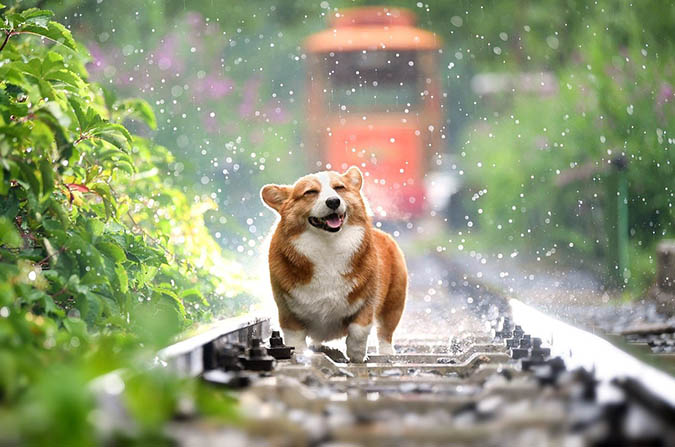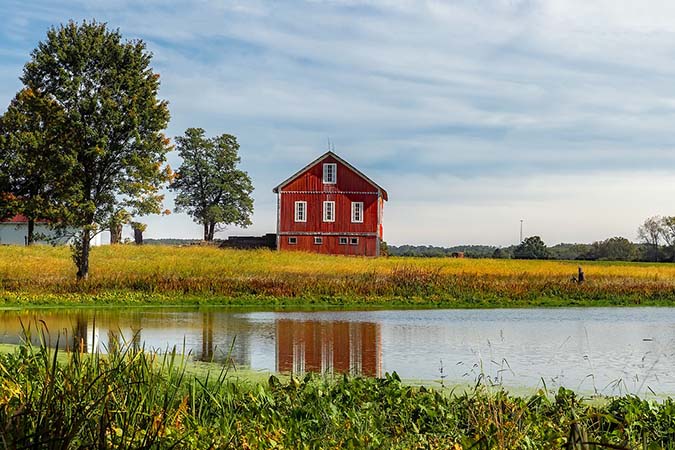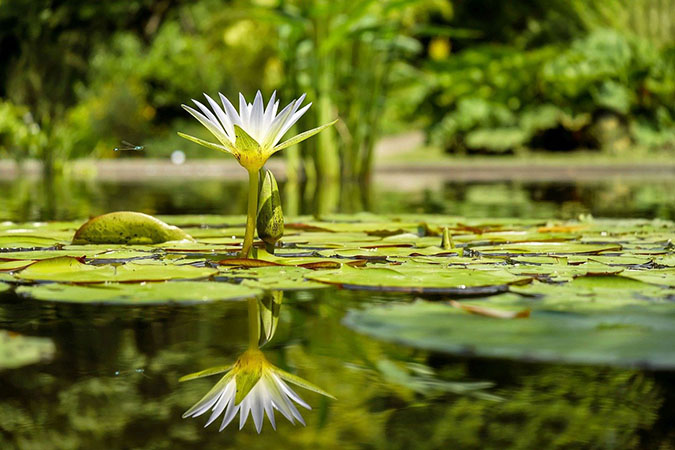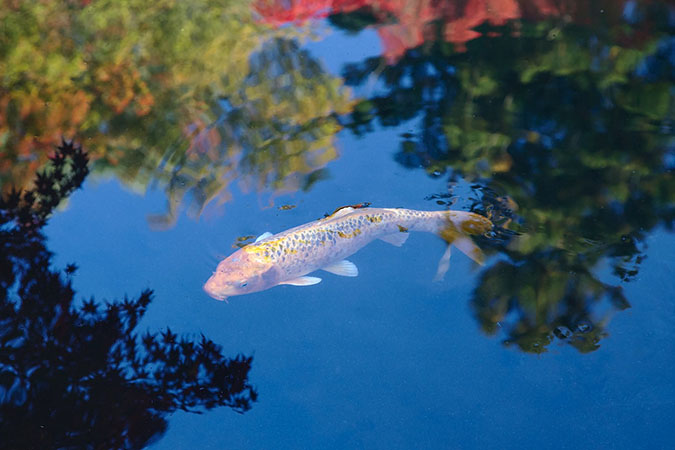To succeed at food production, a backup water supply is essential. Here are 3 of my favorite (FREE!) water storage methods.
3 Ideas for Free Water Storage on the Homestead
I always wanted a pond. I even had a dream once that my dad and step-dad (both gone to their eternal reward) helped me dig a pond. We made a big space and stocked it with fish and plants. When I woke up, I was saddened as the dream evaporated, wishing I could go back to sleep and see not only them, but also the beautiful thing we had built together.
Something inside of us loves water. Running streams, tranquil ponds, even roadside ditches with singing frogs. In Psalm 23—the most quoted Psalm in the Bible—David writes, “You lead me beside still waters, you restore my soul.”
You May Also Enjoy:
“7 Keys to Good Water Management in the Organic Garden”
Water is life. And if you have more water, you have more life. (To an extent, of course. Noah’s unbelieving neighbors would have been happy to have a lot less water … but I digress.)
Having water storage on your homestead is vital to having food on your homestead. A long drought can effectively end a garden.
Multiple Water Supplies = Happy Prepper

Image by huoadg5888 from Pixabay
When I lived at my old property in North Florida, I owned a well. That was an endless source of water with one caveat: the pump ran on electric power. If the power went out, so did our water.
Being a good prepper, I wasn’t happy with one water supply, so I also added some rain barrels to the roof. I was a bit broke, so I didn’t get a big tank like I should have. Instead, I ran gutters into two 55-gallon drums, giving me just enough water to wet the plants around my front gardens.
As I cast around for ideas to give me more water storage without spending money, I had a brilliant idea. Actually, the idea happened by accident when my wife and I were visiting her parents down in South Florida.
Free Water Storage Idea #1: Hot Tub Ponds
By the side of the road, I found an old fiberglass hot tub that had been discarded by a homeowner. I looked at it and realized that all I would have to do is close a few outlets in the thing and it would be a ready-made pond.
A friend with a truck helped me pick it up and drive it back up to North Florida. Then, I used some pipe caps and some silicone and pieces of plexiglass to cover all the holes, filled it with water, threw some soil in the bottom, planted it with various pond plants, and added some goldfish and minnows to eat mosquito larvae.
You May Also Enjoy:
“11 Irrigation Techniques for a Happy Garden”
Now I had a 300-gallon pond/backup water supply. Excited by the success, I called a local pool and jacuzzi company and asked if they ever threw out old hot tubs. “Sure,” they said. Then I asked if they would give me a couple. “No problem,” they said. “Just pay the delivery guy two hundred bucks and we’ll drop ’em off for you.”
I did, and they dropped two more for me. I put them in the middle of my annual gardening space and filled them up, then planted them with more water plants and added more fish. Now I had over 1,200 gallons of water storage on my land. If the electric failed and the well went off, I could still water my gardens.
Here are my old ponds:
A nice thing about these hot tub ponds is they were too hard for a small child to get into. They were above the ground, unlike a traditional pond, meaning that the risk of drowning was much lower. They were also very tough and cost almost nothing to get and set up.
But maybe hot tub ponds are a little too gauche for you. Maybe some psychopath or the head of your local Homeowners Association (but I repeat myself) won’t like those ugly things in your backyard, no matter how important they are to your prepping plans. Maybe you’re not allowed to install a pond of any sort.
So try swales!
Backup Water Supply Idea #2: Swales
Without a pond, another great option is storing water in the ground. One of the ways permaculture teachers (I’m looking at you, Geoff) love to store water is through designing swales to catch rainwater, slow it down, and send the water down into the ground instead of letting it escape as runoff.
If you have a slope, these work very well for concentrating rainfall and sending it deep, where plants can pull from it for days, weeks, or even months between rains. If you design swales on contour, you’ll catch a lot of water that might otherwise be lost through evaporation or runoff.
Like this:
Water Storage Method #3: Deep Mulch
Another tried-and-true method is to deeply mulch the ground so water stays in the soil rather than disappearing back into the atmosphere. The combination of decaying organic matter and covering the ground helps immensely when it comes to water storage.
You’ve probably noticed how you can still find moisture beneath the leaves in the woods even during a drought. I have. I’ve found squishy-wet wood under oaks and pines, even when the sun is baking the cracked ground just a short walk away.
Deep mulching works wonders and keeps plants watered and cool through bad times. Just don’t deep mulch when it’s dry out! It takes a lot of rain to get through the mulch! It’s best to mulch when the ground is wet so the moisture stays in and is replenished by rains later, instead of making a layer over dry ground that prevents rain from getting in.
If I decide to make a deep-mulch garden bed in the dry season, I first loosen the ground with a fork and soak it with the hose for a good, long time before doing any mulching. Here’s a complete presentation on building a lasagna garden:
Water is a must-have on the homestead. Catch it now and hold onto it so you have it when you need it.
I have some more ideas in this additional video. I hope you enjoy my stupid mustache:
What Do You Think?
Do you have a backup water supply? What are your favorite methods of free water storage on the homestead? Share your thoughts in the comments below!
___________________
The Grow Network is a participant in the Amazon Services LLC Associates Program, an affiliate program designed to provide a means for our team to earn fees for recommending our favorite products! We may earn a small commission, at no additional cost to you, should you purchase an item after clicking one of our links. Thanks for supporting TGN!
David The Good is a Grow Network Change Maker, a gardening expert, and the author of five books you can find on Amazon: Compost Everything: The Good Guide to Extreme Composting, Grow or Die: The Good Guide to Survival Gardening, Totally Crazy Easy Florida Gardening, Create Your Own Florida Food Forest, and Push the Zone: The Good Guide to Growing Tropical Plants Beyond the Tropics. Find fresh gardening inspiration at his website TheSurvivalGardener.com and be sure to follow his popular YouTube channel.









